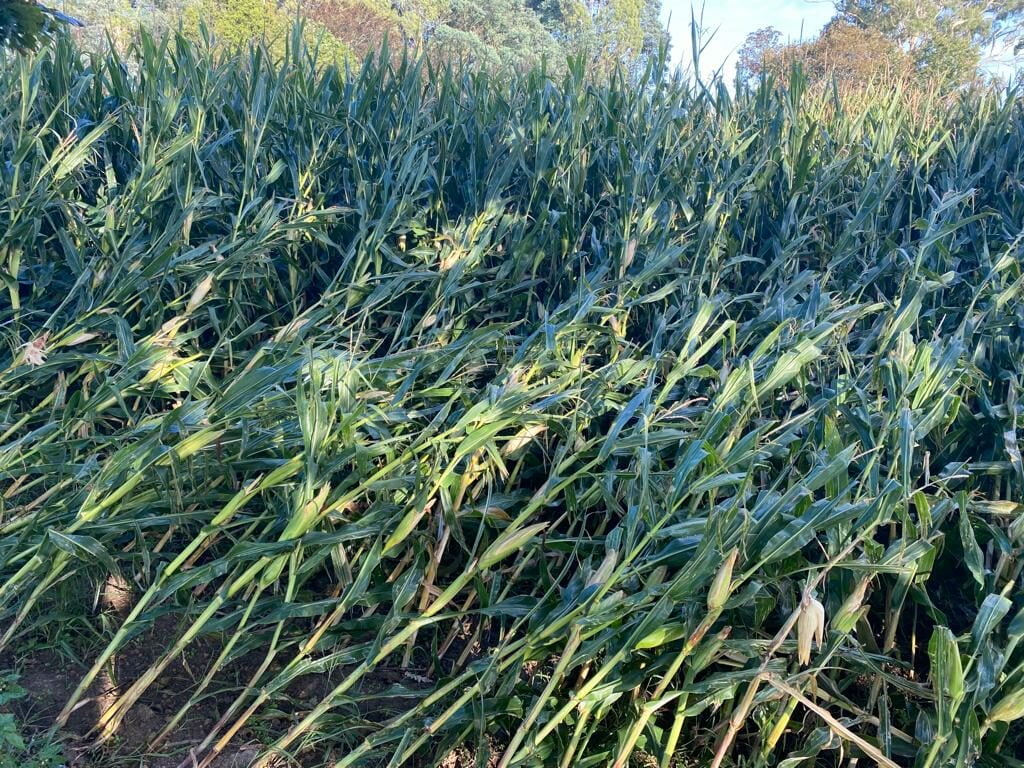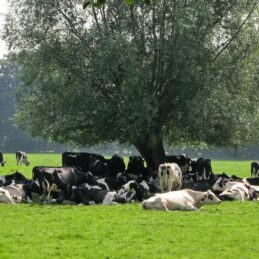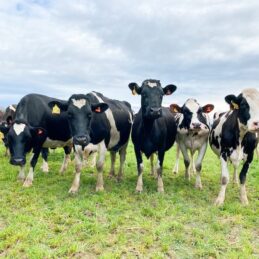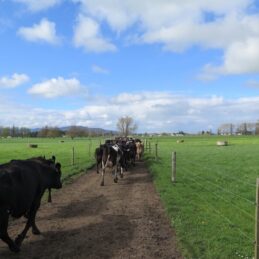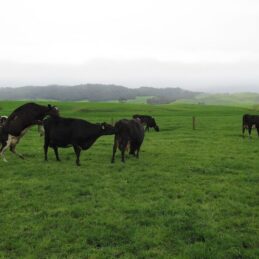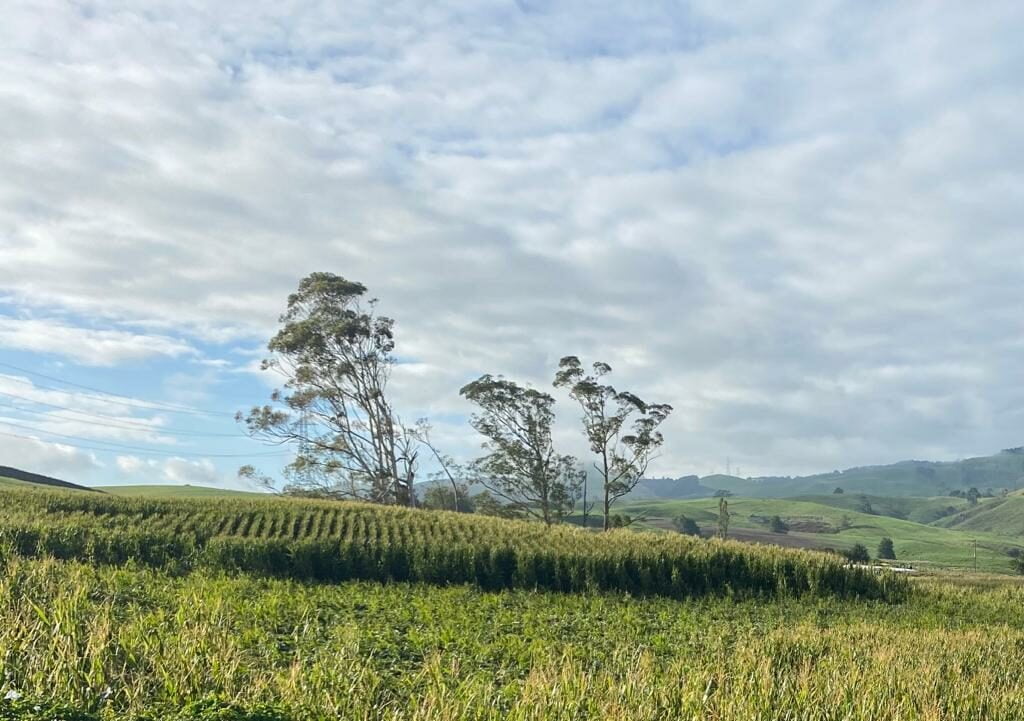
This information aims to arm you with knowledge and options for a proactive response to the recent flooding of standing crops and cut silage.
Do not panic – Harvest at optimal DM, if possible
If the plant still functions, i.e. still able to photosynthesise, it will try to fill some grain and starch. Starch is King, even if it means a drier plant and slightly more NDF (fibre). The recommended dry matter (DM) for whole-plant corn for silage ranges from 32 to 38% DM (62% to 68% moisture). Early harvests, with DM levels lower than 30% DM (higher than 70% moisture), can lead to increased effluent seepage and prolonged fermentation. This can result in a high acid load that may depress feed intake. Clostridial growth is rarely an issue in corn silage, even if wet, but the extra moisture may stimulate microbial activity in general. These silages typically have a low ratio of lactic-to-acetic acids and a higher degree of protein breakdown expressed as soluble protein and ammonia-N. In turn greater levels of other fermentation products, such as alcohols and esters, of which may have a negative impact on intake and performance.
In addition, seepage loss during ensiling results in the loss of soluble, digestible nutrients (sugars, soluble-N and soluble minerals). These immature plants will have greater sugar content and lower starch levels because the plant sugars did not have the time to be converted into starch. In addition, producers can expect higher fibre and crude protein content. Thus, the energy value of immature corn silage will be 85% to 90% of regular corn silage.
If harvesting extremely immature corn before the reproductive growth of the plant has started, it is treated like a grass forage. Corn plants are mowed during the vegetative phase, wilted, and ensiled. It has been a difficult season for some farms, with multiple replants happening, so these later crops may be taken very immature.
On the other hand, if the crops have remained in the field for longer to dry them out, conditions are ideal for yeast and mould proliferation. Low moisture and high dry matter crops are lower in sugars, and this makes them more difficult to compact and this in turn challenges fermentation. Mature crops have more indigestible fibre portions, which can lead to fewer nutrients being available to the animal.
Wet ground transport
Engage with your contractor and see what they have in the way of trailers, and other transport, to enable access into the wet ground when trucks are not viable. Most contractors will have experience that lodged crop feeding into the machine can be difficult. Adjusting the cutter head speed and angle can assist crop feeding in to the harvester. There is a difference between lodged, half flat and totally flattened. For the latter, sometimes waiting for the crop to be much drier allows the plant stem to be weaker and bend to go in to the cutter head, even removing dividers and crop lifters to assist. In this situation it may mean asking the harvester to salvage what they can and then return to get the remaining crop that has dried down further and softened so that it might feed into the machine.
Treat all crops as contaminated
Crops that have been flooded will have been exposed to silt which carries soil microbes. These microbes have a negative effect on silage fermentation, quality, stability and ultimately animal health. In these extreme situations our recommendation is to inoculate the crop with 1.5 times the normal application rate of MAGNIVA® Platinum. Segregate good forage from the more contaminated. Do not pile it all in one pit and contaminate the lot.
Seek advice from the team on how to manage these increased challenges and identify the risks to manage accordingly.
MAGNIVA® Platinum will initiate a very strong and fast initial fermentation dominating and dropping the pH extremely quickly. This will help limit the effect from these undesirable soil microbes. MAGNIVA®Platinum contains Lactobacillus buchneri 40788 and Lactobacillus hilgardii 4785, bacteria specifically selected for silage and both produce anti-fungal compounds in the fermentation that will help control the extra burden of undesirable bacteria present in these situations with challenging field conditions.
Aerobic deterioration
High humidity and high temperature environments lead to a perfect situation in which yeast and moulds thrive. Yeasts and moulds decrease the quality of the silage, lead to aerobic deterioration (heating) and produce mycotoxins which have a detrimental effect on animal health. Once again treating these forages with MAGNIVA® Platinum is recommended and seek advice on managing the challenges that may require MAGNIVA®Platinum at 1.5 times the rate to manage these situations and detrimental microbes.
Chop length
Shortening your chop length on the forage harvester and processing the grain well will help increase compaction (density) which helps dramatically with fermentation while processing will help the digestibility of starch portions in the grains.
Testing
We also recommend analysing the material going into the pit as this will provide a starting point for the quality of the crop being ensiled. Further, we recommend that the silage is regularly tested at feed out. Diets may then be balanced around what is being fed, not what could be assumed as being fed. It is important to recognise that these conditions are extreme and challenging. Try not to be disillusioned by reduced product quality on this occasion. Farms should consider these factors to enhancing maximize potential silage quality and seek advice from specialists and consider using quality-enhancing products.
Flooded silage stacks
Many farms have had their silage reserves inundated with rain and floods. When saved silage is flooded, the acids that preserve the silage can leach out and the volatile fatty acids (VFAs) wash away along with soluble nutrients. What is left behind can be of low nutritional value and is more likely to spoil or be unstable at feed out.
Bulk silage pits and bunks suffer from infiltration of contaminants from the flood water as well as the wash-out effect. While, each individual situation would need to be assessed and managed accordingly, careful feeding and separation of the unaffected silage at the top of the spoiled feed will be needed. Analysis of the stack would be a valuable tool as some of the silages made last spring are showing lower quality than expected, and higher levels of yeast and moulds.
Call your Nutritech Area Manager if you would like any help with topics discussed in this article. Nutritech aims to provide the best possible silage outcome for the best possible animal feeding outcome.
